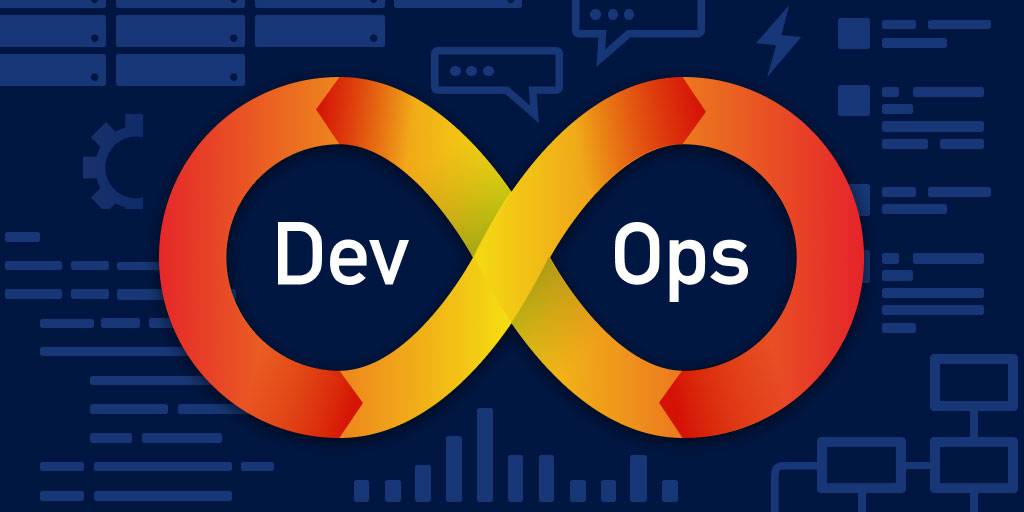An Overview: Cloud Cost Optimization in DevOps
In DevOps, continuous cost optimization, or CCO, is the continuous practice of reducing infrastructure and cloud expenses throughout the software delivery lifecycle. In contrast to one-time cost-cutting, CCO is proactive and integrated into DevOps processes, using data analytics, automation, and monitoring to spot savings potential instantly. Continuous cloud cost optimization in DevOps approaches such as Infrastructure as Code (IaC), Continuous Integration and Continuous Delivery (CI/CD), and automated scaling to ensure that resources are used efficiently.
For example, using spot instances, optimizing cloud CI/CD pipeline processes, and properly scaling resources can reduce unnecessary spending and prevent over-provisioning. CCO in DevOps helps avoid runaway costs that can accompany cloud-based infrastructure by evaluating cost as a basic performance indicator alongside speed and reliability. While procedures like frequent cost audits and cost allocation tags promote accountability, tools like AWS Cost Explorer, Google Cloud Cost Management, and Azure Cost Management provide insights into usage trends.
Through a continuous cloud cost optimization in DevOps approach, businesses match technical goals with financial ones, creating an agile, cost-effective environment that fosters innovation and long-term financial viability.
READ – How to Manage Stateful Applications in DevOps?
Understanding Continuous Cloud Cost Optimization in DevOps
The continuous cloud cost optimization in DevOps is the methodical, process of locating, evaluating, and getting rid of wasteful spending through the software delivery lifecycle. In contrast to traditional cost-cutting, which frequently adopts a broad-brush strategy, CCO in DevOps uses automation, data analytics, and monitoring to make small, real-time cost-cutting adjustments.
Implementing continuous cloud cost optimization in DevOps is made easier, which place a strong focus on infrastructure as code (IaC), continuous integration, and continuous delivery (CI/CD). Effective cost management and reduction are made possible by these methods, which enable teams to automate procedures, track infrastructure performance, and make adjustments in real time. Organizations may turn their DevOps process into a comprehensive optimization engine by including cost as a metric that is just as significant as performance and security.
While DevOps’s core principle of continuous improvement ensures that systems are optimized for performance, security, and resilience, cost reduction has emerged as a critical element of continuous improvement. This is due to the enterprises increasingly rely on cloud-based infrastructures and the rapidly evolving tech landscape.
Key Components of Continuous Cloud Cost Optimization in DevOps
CCO in DevOps depends on many essential elements, each of which is essential to preserving an environment that is both economical and sustainable. These are some of the key components of a good cloud cost optimization in DevOps:
1. Monitoring and Analytics
Teams may learn how resources are being used, how well they are working, and how much they cost thanks to real-time monitoring and analytics. Usually, cloud providers’ cost-management tools or dashboards (such as AWS Cost Explorer, Google Cloud Platform’s Cost Management, and Azure Cost Management) are used to achieve this.
2. Spot and Reserved Instances
Cloud consulting services provider companies frequently give instances with flexible usage terms at a subsidized price. For instance, reserved instances (reserved for longer periods) lower costs by committing to resources in advance, although spot instances can save money if workloads can withstand disruptions.
3. Automated Scaling and Right Sizing
Auto-scaling capabilities offered by cloud platforms enable resources to grow and shrink in response to demand. Applications that are properly sized use only what is required. Resizing databases or virtual machines to fit workload requirements, for instance, helps avoid over-provisioning and can result in significant cost savings.
4. Data Storage Optimization
Storage frequently accounts for a sizable portion of cloud expenses. To guarantee that data is stored economically, data storage optimization focuses on lifecycle management, data compression, and tiering. Effective cost management can also be achieved by putting in place automated archiving guidelines and data disposal plans.
Why Continuous Cloud Cost Optimization in DevOps is Critical
Because cloud-based infrastructures are dynamic and resource-intensive, continuous cost optimization, or CCO, is essential to DevOps. If resources are not properly managed, cloud expenses can quickly increase as businesses scale and launch apps more quickly. To solve this, continuous cloud cost optimization in DevOps constantly tracks and optimizes costs without sacrificing effectiveness or creativity. The emphasis on automation, continuous integration, and delivery in a DevOps setting may unintentionally result in resource waste.
Organizations can maximize the value of their infrastructure investments by preventing overspending, right-sizing resources, and getting rid of idle instances by incorporating cloud cost optimization in DevOps as a fundamental component. CCO in DevOps improves visibility, responsibility, and agility in addition to financial gains. Teams may develop a cost-conscious culture across departments by keeping an eye on cost metrics, which help them understand the financial impact of their workflows.
As DevOps engineers can swiftly scale resources up or down in response to demand, this strategy also increases the organization’s agility while improving responsiveness and controlling costs. Businesses are discovering that, if left unchecked, cloud expenses can rapidly become out of control as cloud usage keeps growing. DevOps needs a CCO for many reasons like:
1. Cloud Cost Control
Although advantageous, cloud services’ pay-as-you-go concept might result in surprisingly expensive costs if resources are misused or underutilized. Constant optimization guarantees that businesses are only spending what they require.
2. Competitive Advantage
Businesses can increase profit margins and provide competitive pricing by cutting expenses without sacrificing performance. Additionally, speed and agility can be enhanced by effective resource management, enabling DevOps teams to release changes more quickly.
3. Enhanced Visibility and Accountability
By putting cloud cost optimization in DevOps practice, firms can gain important insights into how resources are being used and determine which projects, teams, or apps are causing the most expenses. This promotes responsibility and makes more precise budgeting possible.
4. Sustainability
Organizations can contribute to sustainability initiatives and responsible resource management by lowering their carbon footprint through the reduction of needless consumption.
5. Agility and Scalability
Businesses can scale applications up or down in response to demand without worrying about wasteful resource use or excessive expense by incorporating continuous cloud cost optimization in DevOps.
READ – How to Use Adaptive AI for Automating DevOps Tasks
Effective Strategies for Implementing CCO in DevOps
A multifaceted strategy integrating operational, cultural, and technical changes is needed to implement continuous cloud cost optimization in DevOps. Here are a few successful tactics:
1. Establish Baselines and Benchmarks
Understanding the current situation is crucial before starting a cost optimization project. By establishing cost baselines and benchmarks, teams may precisely evaluate the results of their optimization efforts.
2. Adopt a FinOps Approach
By uniting the finance, operations, and engineering teams, FinOps (Financial Operations) ensures that cloud spending is financially accountable. It aligns financial goals with technological initiatives and fosters a culture of ownership and cooperation.
3. Leverage Automation for Efficiency
From automated scaling to planned off-peak shutdowns of non-production environments, automation is essential to CCO in DevOps. Teams can determine where optimization is required by using automated resource tagging to help with cost allocation and tracking.
4. Optimize CI/CD Pipelines
Ensure that just the resources required are used by CI/CD pipeline processes. To cut down on storage needs, for instance, utilize smaller instance sizes for test environments, limit the number of concurrent builds, and think about testing with synthetic data. Costs are also decreased by just running tests when required, such as on significant code changes.
5. Optimize Storage Costs
To transfer rarely used data to less expensive storage tiers and remove outdated data, organizations should implement storage lifecycle management techniques. Storage solutions like Azure Blob Storage and AWS S3 Intelligent-Tiering assist organizations in striking a balance between cost and data accessibility needs.
6. Use Cost Allocation Tags
DevOps teams can use tags to group and monitor expenditures by environment, team, or project. This promotes accountability by making it simpler to pinpoint cost drivers and allocate expenses precisely.
7. Implement Predictive Analytics
Teams can make proactive modifications and cut expenses by using predictive analytics to forecast future resource requirements and discover consumption patterns. By suggesting the best resource configurations based on historical performance, machine learning algorithms can help even more.
8. Regular Cost Audits
Regular evaluations of resource utilization might highlight areas for cost reduction that could go unnoticed in regular business operations. Regular cost audits promote proactive cost control by assisting in the identification of unused resources.
Tools for Continuous Cloud Cost Optimization in DevOps
Numerous technologies can help with the implementation of continuous cloud cost optimization in DevOps by automating repetitive operations, offering insights into cost data, and suggesting optimization options. Here are some well-known ones:
- AWS Cost Explorer: Gives teams comprehensive information about how AWS resources are being used, allowing them to create budgets, find cost drivers, and get warnings.
- Google Cloud Cost Management: Offers robust cost management features, including cost breakdowns by service and region, budget alerts, and recommendations for reducing expenses.
- Azure Cost Management and Billing: offers budgeting and cost reporting tools to assist teams in making the most of Azure platform resources.
- CloudHealth by VMware: a tool for managing several clouds that assist in monitoring and maximizing expenses across cloud providers. It offers governance tools, cost-saving suggestions, and insight into cost drivers.
- Kubecost: This tool, which was created for Kubernetes, offers resource usage data and cost visibility for containerized settings. It assists businesses in cutting costs and optimizing Kubernetes workloads.
- Finout: A cloud-cost monitoring tool that offers up-to-date information on how costs are distributed among various cloud environments. It is perfect for putting FinOps practices into practice because it is made for both technical and financial teams.
READ – DevOps for IoT Applications: Challenges, Tools, Workflow, and Benefits
Challenges of Continuous Cloud Cost Optimization in DevOps
Continuous cloud cost optimization in DevOps is difficult to do, particularly for businesses that are new to the cloud. Typical difficulties include the following:
1. Complexity of Multi-Cloud
Environments Managing expenses across several platforms gets more difficult as businesses use multi-cloud strategies. Maintaining uniformity is challenging due to disparate pricing schemes, invoicing procedures, and monitoring systems.
2. Cultural Resistance
CCO adoption necessitates a mental change. Cloud cost optimization in DevOps initiatives may be resisted by engineering teams used to putting performance first because they see them as impediments to creativity or rapid progress.
3. Balancing Cost with Performance
It takes careful balance to maximize expenses without sacrificing performance. If not properly managed, cost-cutting strategies like employing spot instances or reducing resources may have an impact on application performance.
4. Constantly Changing Pricing Models
Cloud companies regularly launch new services and make changes to their price structures. It might be difficult to keep up with these developments, necessitating ongoing education and cost optimization strategy modification.
5. Tool Integration and Complexity
Although there are many tools available for tracking and optimizing cloud expenses, it can be difficult to integrate them with current DevOps platforms and pipelines, particularly if the solution does not support multi-cloud or hybrid settings.
Conclusion
Businesses looking to get the most out of their infrastructure and cloud expenditures must implement continuous cloud cost optimization in DevOps. Teams may save a lot of money without compromising performance or agility by making cost a key indicator in DevOps. Monitoring, automation, governance, cultural, and digital transformation are all necessary for an effective CCO in DevOps.
When properly applied, CCO gives businesses the capacity to run more effectively, obtain a competitive advantage, and promote an accountable culture. CCO in DevOps has the potential to be a game-changing technique that improves operations and lowers operating costs with the correct tactics and resources.
Read more:



